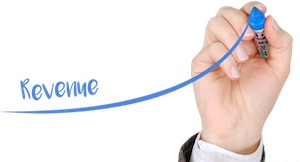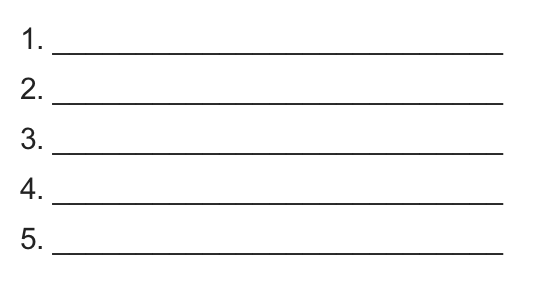
Do you remember the days when you got a report card from school? Now that you have a business, your business has grades as well. But it’s up to you to calculate them. Here are some grades you can compute for your business to give it a report card of its own.
Financial Grades
How successful is your business from a financial standpoint? These financial ratios can help you give yourself a grade.
Return on equity
This ratio measures profitability as it relates to the investment or money you have tied up in your business. The formula is net income / average equity. An ROE of 15 percent or more is an “A” for your business report card.
Return on assets
This ratio measures profitability as it relates to your business assets. The formula is net income / total assets. An ROA of five percent or more is an “A” for your business report card.
Asset turnover
This ratio measures efficient use of your business assets. The formula is sales / total assets. This number should be high for low margin businesses and low for high margin businesses.
Profitability Grades
How profitable is your business? You might know your bottom line number, but there’s more to it.
Gross profit margin
This ratio measures the financial health of a company as it relates to how much money is available to cover overhead. Calculate it as follows: (revenue – cost of goods sold) / revenue.
The value will be different depending on what industry you’re in, but some say a range of 25 to 35 percent is normal for small business.
Net profit margin
Net profit margin measures how profitable your business is in relation to the amount of sales you have. As an example, a business that can make $50K in profits on $500,000 in revenue is more healthy than one that can make $50K profits on $3 million in revenue. The formula is net income / total sales, and although it depends on the industry, a net profit margin over 10 percent is considered an “A.” Report cards were important in school, but they’re even more important in business. If you’d like us to set up one for your business, let us know.

 The start of a new year also means that it’s the perfect time to revisit old business strategies from last year so that you can maximize your revenue for 2019. If your financial numbers were fantastic last year, that’s great! Keep the strategies that worked for you and cut the ones that didn’t.
The start of a new year also means that it’s the perfect time to revisit old business strategies from last year so that you can maximize your revenue for 2019. If your financial numbers were fantastic last year, that’s great! Keep the strategies that worked for you and cut the ones that didn’t. Many people in their retirement years have regrets about not saving more during their earning years, but you don’t have to be one of them. All you need to do is be realistic and proactive about saving. It’s all about paying your future self.
Many people in their retirement years have regrets about not saving more during their earning years, but you don’t have to be one of them. All you need to do is be realistic and proactive about saving. It’s all about paying your future self.  Reputation management is a relatively new area within marketing. In a way, it’s similar to digital public relations; it’s the management of a company’s reputation online. There’s also a customer service component to reputation management.
Reputation management is a relatively new area within marketing. In a way, it’s similar to digital public relations; it’s the management of a company’s reputation online. There’s also a customer service component to reputation management. 2019 is right around the corner, which makes today the perfect time to think about your business goals and where you want to be one year from now. As year-end wraps up, you’ll soon know your financial numbers for 2018. You’ll then be able to evaluate how you did and map out a new plan for 2019.
2019 is right around the corner, which makes today the perfect time to think about your business goals and where you want to be one year from now. As year-end wraps up, you’ll soon know your financial numbers for 2018. You’ll then be able to evaluate how you did and map out a new plan for 2019. Do you know if your marketing efforts are paying off? More importantly, do you know which marketing campaigns and channels are profitable and which are losing money?
Do you know if your marketing efforts are paying off? More importantly, do you know which marketing campaigns and channels are profitable and which are losing money? With holidays approaching, this is the perfect time of year to take a moment and reflect on all of the things we are grateful for. Being grateful may sound a bit trite, but it’s also the number one, hands down, fastest way to bring more positivity and less negativity into your work and life.
With holidays approaching, this is the perfect time of year to take a moment and reflect on all of the things we are grateful for. Being grateful may sound a bit trite, but it’s also the number one, hands down, fastest way to bring more positivity and less negativity into your work and life.
 Blockchain is a term that has been bantered about quite a bit when referring to the future of accounting technology. While its impacts are primarily long term in nature, let’s take a brief look to see what everyone is talking about.
Blockchain is a term that has been bantered about quite a bit when referring to the future of accounting technology. While its impacts are primarily long term in nature, let’s take a brief look to see what everyone is talking about. How well do you love the way you spend your typical workday? What would a typical workday look like if you had absolutely no constraints? Here’s a fun exercise to get you thinking about your future and how you can make small changes in your current day to move it toward your ideal day.
How well do you love the way you spend your typical workday? What would a typical workday look like if you had absolutely no constraints? Here’s a fun exercise to get you thinking about your future and how you can make small changes in your current day to move it toward your ideal day.

.jpg)



